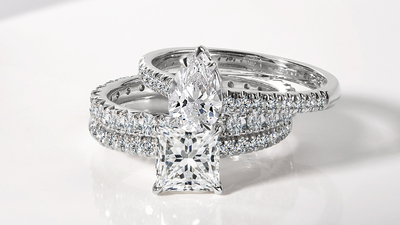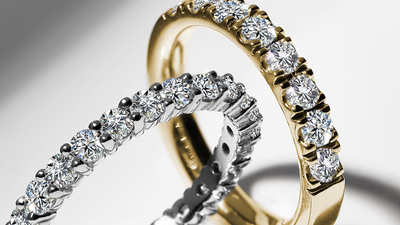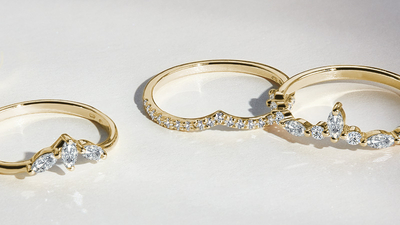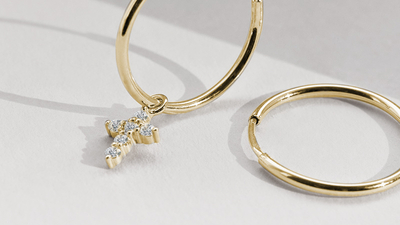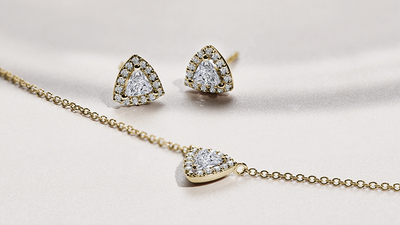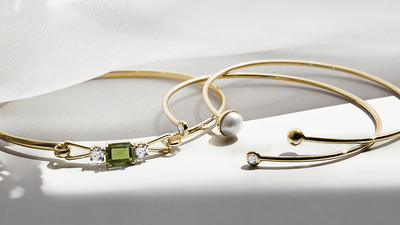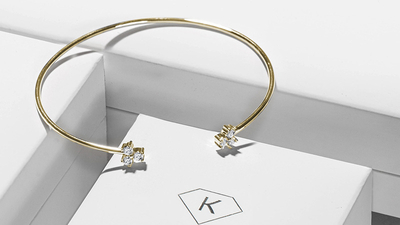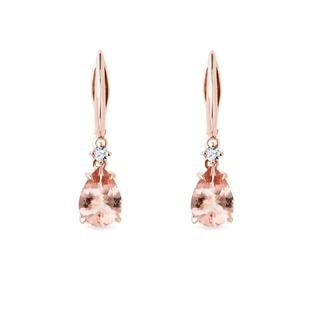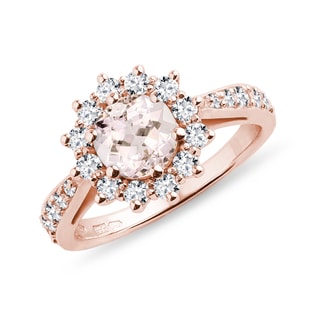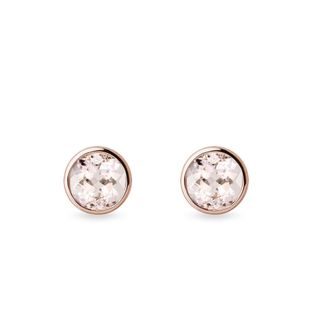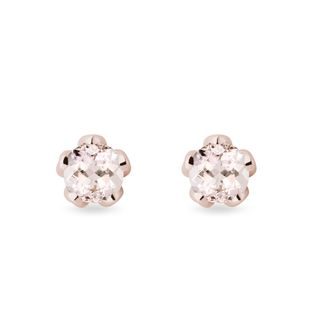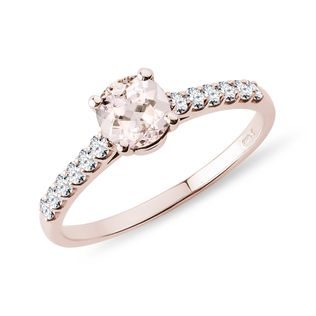If you haven't heard of the lovely, pink morganite as yet, it's little wonder. This gem does not have a long history, since it was only discovered in 1910. It was found in California and named after the famous financier and mineral collector John Pierpont Morgan. After its discovery, it took some time before the stone became widely known and began to grow in popularity.
Since the morganite has only been widely known relatively recently, there are no legends connected with it. We only know that in antiquity it was called a pink rose. But whether that description was really meant for the morganite is not certain.
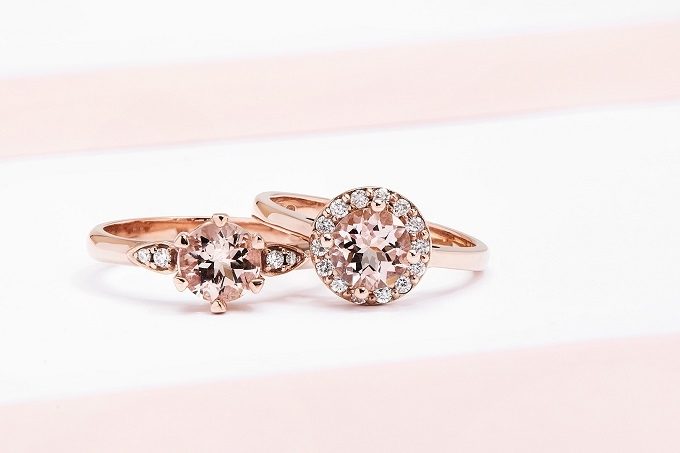
Modern traditions and legends
The morganite, also referred to as the angel’s stone, apparently benefits people born under the sign of Libra, Aquarius and Taurus the most. It’s also said to relieve stress and bring calm and balance to the nervous system. It is therefore used very often during meditation. It brings women a sense of both independence and harmony with the opposite sex, while helping men balance their masculine and feminine energy.
Morganite also has the ability to bring out and maintain feelings of love in people. It’s associated with love and romance, due, of course, to its delicate pink colour. So jewellery with morganite, like a morganite necklace or earrings, will be perfect as a gift for Valentine's Day or an anniversary. And if you plan to propose, an engagement ring with morganite is a great, stylish choice.
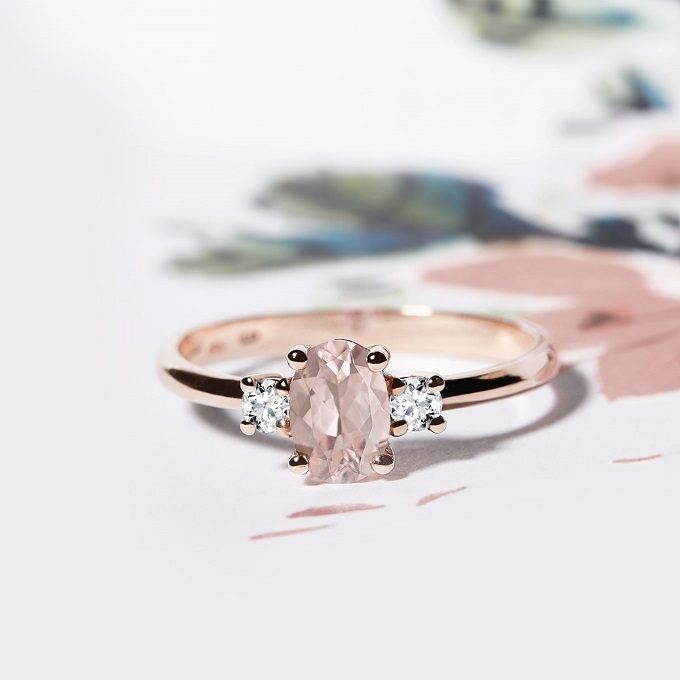
The chemical and mineral properties of morganite
Like emeralds or aquamarines, morganites belong to a group of minerals called beryls. This is also why the morganite is sometimes called a pink emerald or pink beryl. Its chemical name is somewhat scary sounding: beryllium aluminium silicate. On the colour scale, it ranges between pink, salmon and purple in colour, and its slightly pastel colour is caused by the presence of manganese or caesium.
It is placed just above quartz on the hardness scale, ranging anywhere from 7.5 to 8. However, despite its comparatively high hardness, morganite is relatively fragile. It has a glassy lustre and conchoidal fracture properties, and it splits to the base and leaves a white mark behind when it is dug out of its base. It is transparent to opaque and crystallises in a hexagonal crystal system. It forms prismatic to tabular crystals which can be relatively large. It is found on pegmatites in the form of overgrown druses.
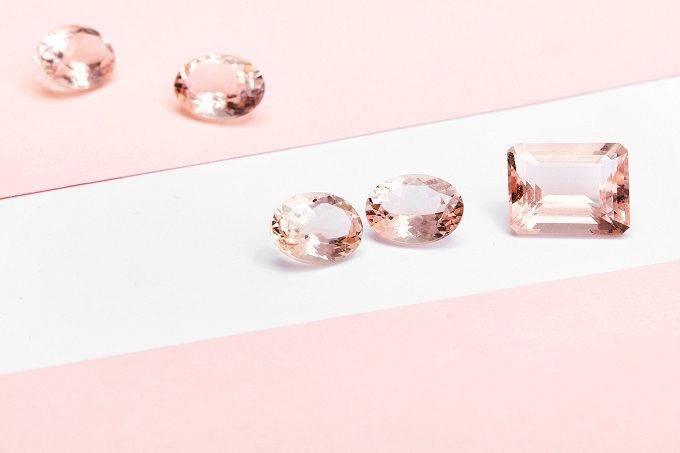
Some morganites have a cat’s eye effect. Such stones are cut and polished in the shape of cabochons. Another optical feature of morganites is pleochroism: where at certain angles they display pink to bluish shades of colour. In order to achieve this property, the stone must be oriented correctly whilst being cut.
How to flaunt a morganite’s beauty to the fullest
Size, colour and purity are the most valued qualities of morganites. As a rule, the larger the stone, the deeper the colour. The most valuable are the deepest pink pieces without any orange tinge to them. Nowadays, however, this trend is slowly changing and collectors have begun to look for different coloured stones with tinges of other colours in them. In terms of purity, morganite is one of the exceptions among precious stones, as it very often does not contain any inclusions. There are not very many deposits of morganite and its price also reflects this fact. Morganite is therefore one of the most expensive gems in the world.

We especially recommend combining morganite with white and rose gold. Its naturally delicate colour stands out in white gold. When set in rose gold, it creates a beautifully romantic piece that looks very soft and feminine. Morganite also suits yellow gold, but it may slightly distort its pink hues. If you would like to accentuate a piece of morganite jewellery with another stone, there’s no better choice than the king of all gems - a white diamond. Its lustre will make the jewel shine beautifully, but it will not distract attention from the morganite centrepiece. Especially in halo rings, this combination looks pristinely luxurious.
Since morganite is a relatively new stone, and what’s more, is very suitable for cutting and polishing, gem cutters really like to experiment with it. Due to its physical properties, it is possible to produce relatively large cut pieces, something which is often unthinkable or very rare with other gems. With morganites, we typically find classic oval and round cuts. As a close relative of the emerald, morganites of course suit the emerald cut too. An interesting choice is also a triangular cut called trillion which looks very modern. In our collection, you will also find morganites in the shape of a drop (pear).
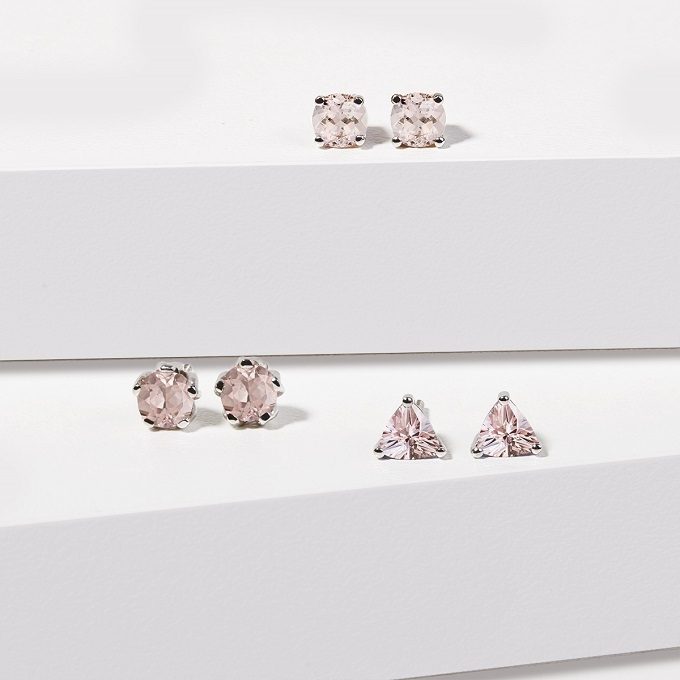
What to watch out for when buying and taking care of your morganite
Morganites can be artificially heat treated at relatively low temperatures (around 400 °C). This is often done to adjust the colour and remove any orange or yellow tint. This treatment is accepted in jewellery making and almost all morganites available today are improved in this manner. Furthermore, morganites can be irradiated from clear beryls. Customers should be advised of any such modifications by the seller.
Morganites can be confused with rose quartz, which is a variety of quartz. Unlike morganite however, rose quartz is milky, less transparent and not as shiny. It is also slightly softer. Another similar mineral is the kunzite variety of spodumenes. It is softer than morganite and has a more pronounced pleochroism. Other pink stones such as topaz, spinel or rubellite, have a deeper pink colour and more frequent inclusions (these are always found in rubellites). Your peace of mind will be guaranteed with a complimentary certificate of authenticity, which you will receive with every piece of KLENOTA jewellery.
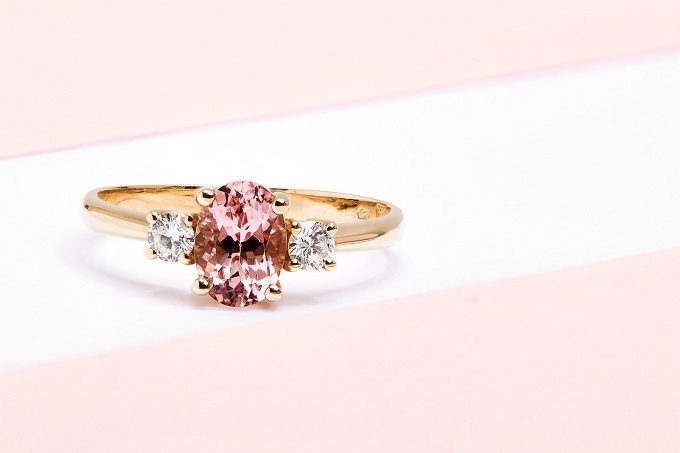
Like aquamarine, morganite is clear and very delicately coloured. That means that we can see through it to anything under the stone. If it gets dirty, like while cooking, for example, it temporarily loses its shine and appears to change colour. What’s more, it is relatively brittle and sensitive to pressure. Like other beryls, it can also be damaged by chemicals. We recommend that you remove any jewellery with morganite (especially rings) before exercising, doing housework, etc. in order to prevent dirt or damage. Slightly dirty stones can be gently washed in soapy water. If your stone gets really dirty, we do not recommend that you clean it at home.
The biggest, most beautiful and most famous morganites
The best pink morganites are mined in Madagascar. This is where the highest quality morganites, incomparable to any others in the world, come from. Peachy, orange-coloured morganites are exported from Brazil, while other deposits can be found in China, Pakistan, Russia, Zimbabwe, Burma, Afghanistan, Mozambique and California and Maine in the US.
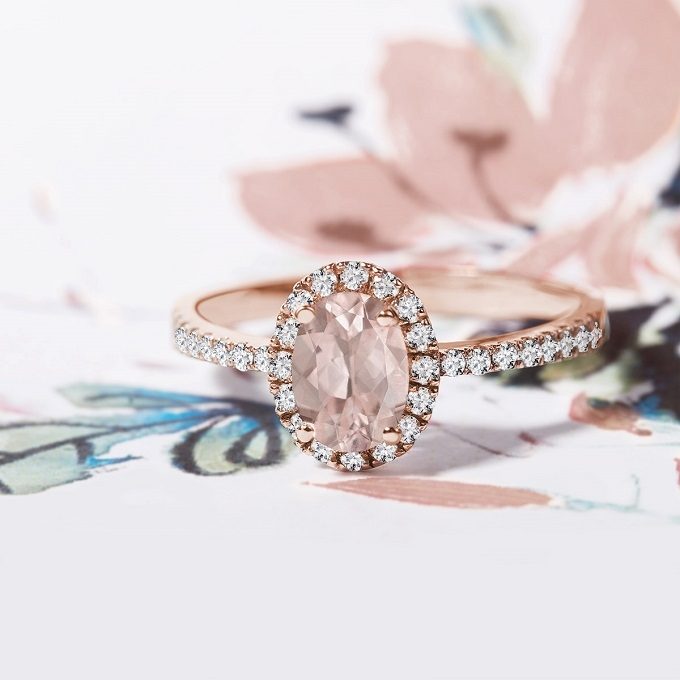
The largest cut morganite stone is 600 carats (120 g) in size and comes from Madagascar. It has a cushion cut, and you can see it on display in the British Museum. The Smithsonian Institute in Washington, DC has two faceted morganites in its collection. The first weighs 250 carats (50 g), while the second is 236 carats (47.2 g).
One of the largest natural morganites was found on October 7, 1989 at the Bennet Quarry of Buckfield mine in Maine. The stone had an orange tinge and was 23 × 30 cm large. The weight gauge stopped at an amazing 50 pounds, about 22.7 kg! This morganite was named Rose of Maine. Brazilian miners have also found out during their works that morganite crystals can reach respectable proportions. When mining they encountered a crystal weighing about 10 kilograms, for example.
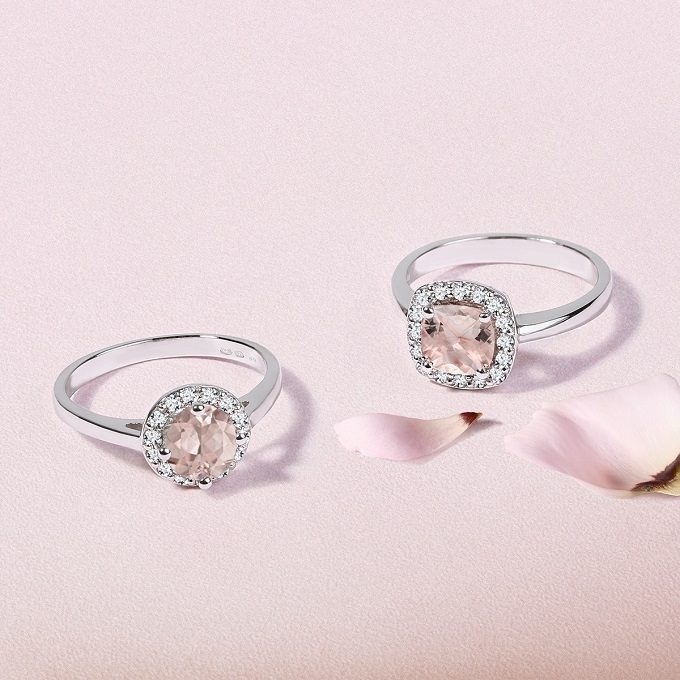
 Great Britain
Great Britain
